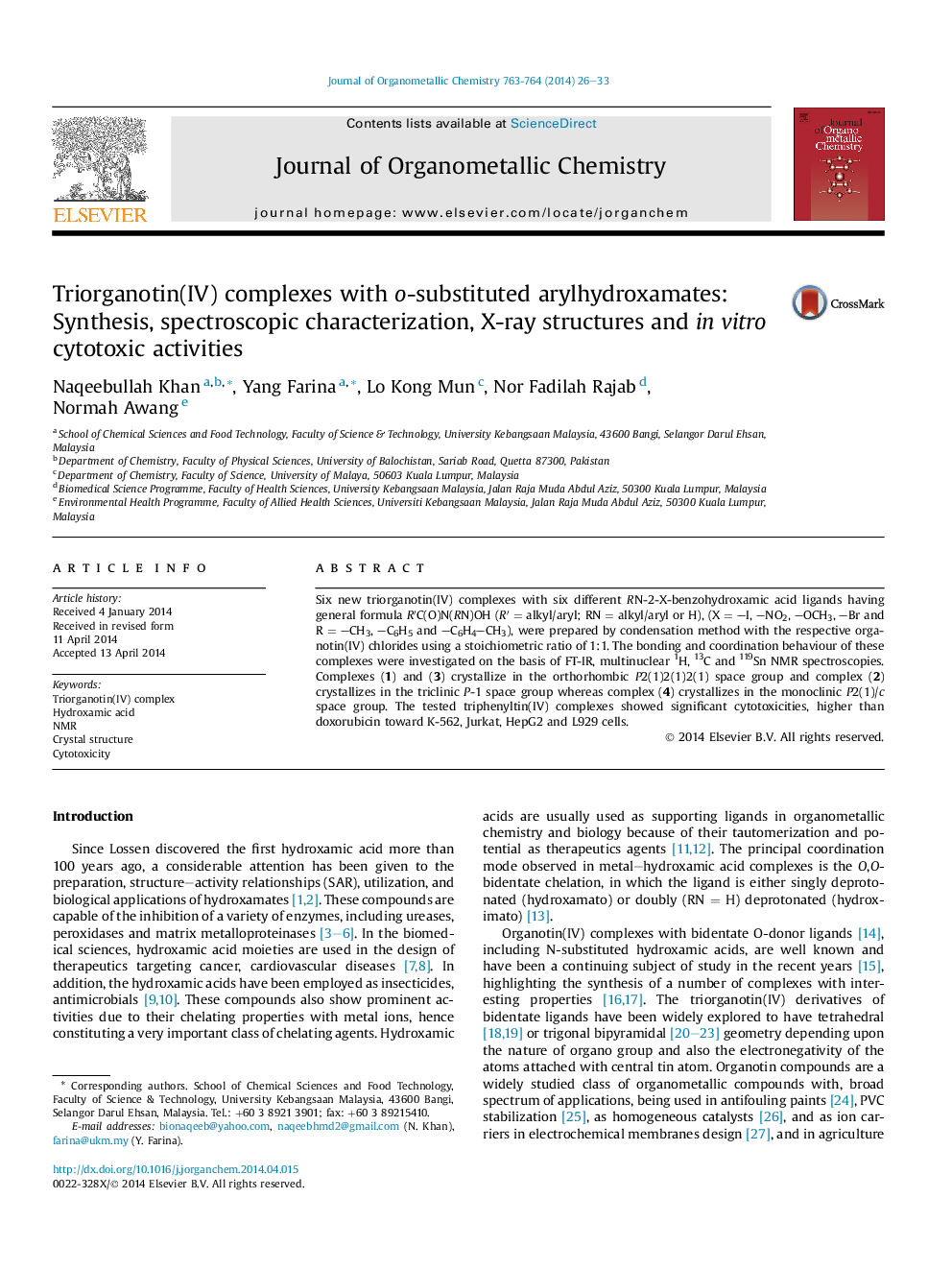| Article ID | Journal | Published Year | Pages | File Type |
|---|---|---|---|---|
| 1323977 | Journal of Organometallic Chemistry | 2014 | 8 Pages |
•Six new triphenyltin(IV) hydroxamates were synthesized.•The complexes were characterized by CHNS, IR, TGA, NMR and X-ray.•The NMR and X-ray studies were in full concurrence with the IR studies.•The structures of the complexes adopted a five coordination geometry at tin.•The complexes demonstrated promising antiproliferative activities at μM concentration.
Six new triorganotin(IV) complexes with six different RN-2-X-benzohydroxamic acid ligands having general formula R′C(O)N(RN)OH (R′ = alkyl/aryl; RN = alkyl/aryl or H), (X = –I, –NO2, –OCH3, –Br and R = –CH3, –C6H5 and –C6H4–CH3), were prepared by condensation method with the respective organotin(IV) chlorides using a stoichiometric ratio of 1:1. The bonding and coordination behaviour of these complexes were investigated on the basis of FT-IR, multinuclear 1H, 13C and 119Sn NMR spectroscopies. Complexes (1) and (3) crystallize in the orthorhombic P2(1)2(1)2(1) space group and complex (2) crystallizes in the triclinic P-1 space group whereas complex (4) crystallizes in the monoclinic P2(1)/c space group. The tested triphenyltin(IV) complexes showed significant cytotoxicities, higher than doxorubicin toward K-562, Jurkat, HepG2 and L929 cells.
Graphical abstractSix triphenyltin(IV) complexes prepared with the respective triorganotin(IV) chlorides and were investigated on the basis of CHN, TGA, FT-IR, NMR and X-ray studies. Complexes (1) and (3) crystallize in the orthorhombic and (2) in the triclinic whereas (4) in the monoclinic space group. These compounds demonstrated promising cytotoxic activities.Figure optionsDownload full-size imageDownload as PowerPoint slide
